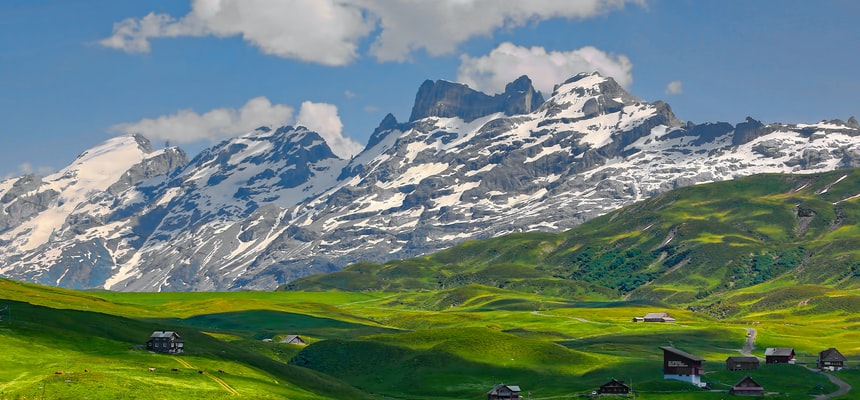
JANUARY 13 is the feast day of ST. BERNO OF CLUNY (+ 927)
Saint Berno of Cluny was born around 850 AD in Burgundy, France. His father was, probably, Odon, the hero noble. This man saved the lives of numerous Benedictine monks when the Vikings attacked the interior of France and, specifically, Glanfeiull Abbey in 862. Berno would have still been a child.
The young Berno was very impressed by the monks. They were of the stricter sect of Benedictines who prayed office and fasted daily. Louis the Pious (d. 840), son of Charlemagne, pushed for reform in the mid-800s. He commissioned Benedict of Aniane to return the monasteries throughout France back to what Benedict of Nursia had originally ordered in the 5th century.
Young Berno went to Autun to join the abbey of St. Martin as a new monk, Apparently, the young monk was very capable at organization. And he understood the reformed rules well. Later, he went to restore the monastery of Baume-les-Messieurs. This monastery was in poor shape. He made it into one of the best reformed Benedictine abbeys.
ESTABLISHING A MONASTERY HIS WAY
At that time, rich patrons often established monasteries on their own. These nobles and bishops would finance their maintenance in exchange for prayers for the patrons’ intentions. So, the monasteries would be, in essence, personally owned and inheritable by various individuals. This gave Berno ideas.
In 890, Berno established the monastery of St. Peter at Gigny. He chose an idyllic location in the Jura Mountains, between France and Switzerland. This was his own inheritance and his own money. Of course, he was the first abbot. Berno was supported by King Rudolph I of Burgundy in his work. Four years later, he went to Rome to get papal approval for a charter. He was successful. He, then, had two monasteries following the reformed rules of Benedict of Aniane. Their lives focused on prayer, silence and solitude.
In the early 900s, Duke William of Aquitaine gave Berno the monasteries of Deois and Massay. In addition, he wanted a new monastery built and asked Berno to be the abbot. Then, William asked Berno where it should be built. Berno replied, at William’s favorite hunting lodge. This way, William would be required to sacrifice, also. Hesitant, at first, William acquiesced. In his desire to develop this new monastery, William made guarantees. He pledged that the monastery would be free from control by him or any temporal power. He also promised that it would be under the direct control of the Pope. The reformed Benedictine rule was to be used. The abbot, Berno at that time, had to pay ten solidi of gold (currently $810) every five years, to the Pope. This monastery became the center of the Benedictine order.
At the time of his retirement, in 925, Berno was supervising six monasteries, Gigny, Baume, Aethicens, Deois, Massay and Cluny. He gave the first three to his monk, Wido, to guide. Then, the last three went to the monk, Odo, to guide. Wido wanted Cluny and argued about his inheritance. Pope John X had to step in to maintain Berno’s wishes. Berno died January 13, 928.
Within 200 years, Cluny was the spiritual center of Western Christianity. It eventually developed an association with 2000 monasteries in Italy, England and Spain.
Over more hundreds of years, the influence of Cluny waned. More religious orders, each with different goals, attracted more men. The monks of the abbey, themselves, became attracted to luxury. They spent tremendous amounts of money on building the largest church in Europe. And it was, until 1626 with the completion of St. Peter’s in Rome. During the French Revolution, even though Cluny was very far from Paris, and in a country setting, the abbey was attacked. It was destroyed and torn down. It never recovered.
“God will repay each person according to what they have done. To those who by persistence in doing good seek glory, honor and immortality, he will give eternal life. But for those who are self-seeking and who reject the truth and follow evil, there will be wrath and anger.” Romans ii. 6-8

Recent Comments